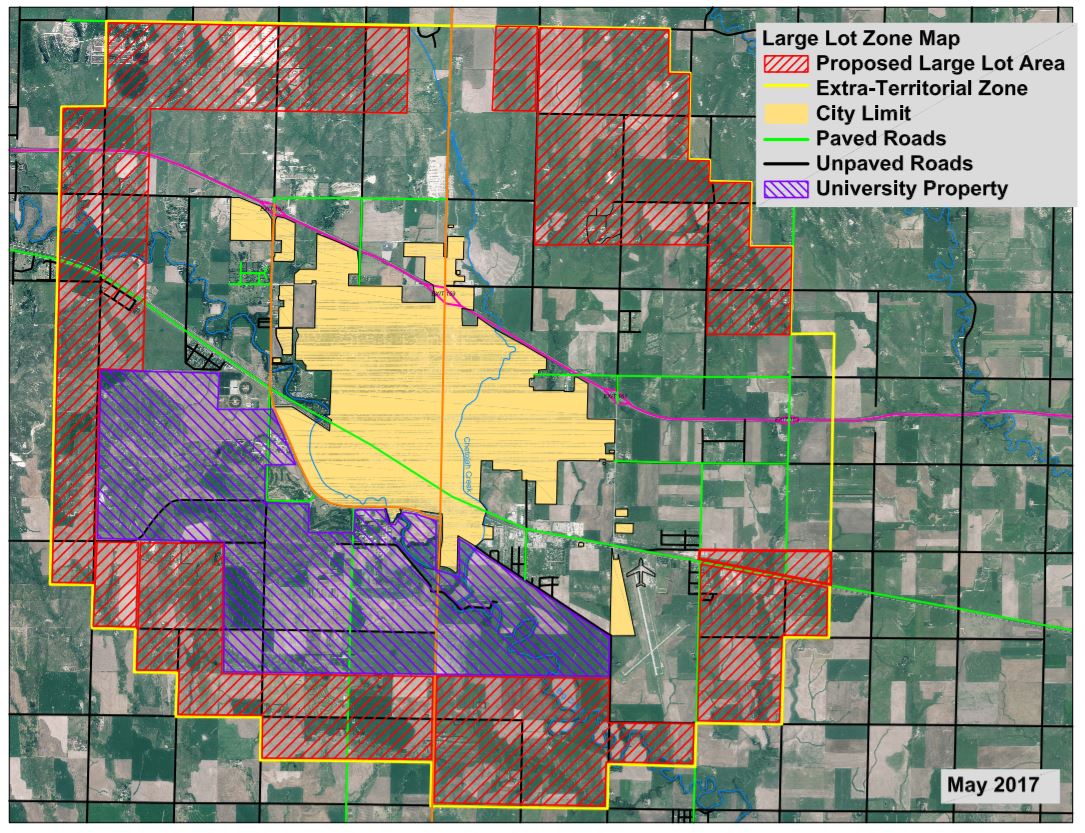
By BECKY KISER
Hays Post
As far as the city of Hays is concerned, the 3-mile Extraterritorial Jurisdiction (ETJ) surrounding its city limits is considered contiguous to Hays and unavailable for large lot development.
That is likely to change.
The intent of the ETJ is to provide a high level of protection for the city in future growth areas. The Hays Unified Development Code (UDC) states “Urban type development is not to be encouraged unless the city or the county agrees to provide the level of service necessary to provide a reasonable level of fire and police protection, a public water source, sanitation service, paved streets and administrative service, such as a coordinated street naming and addressing system.”
According to Public Works Director Jesse Rohr, “there has not been clear direction, guidance, or policy for the development of large lot subdivisions, especially those of approximately 1 acre in size or larger.”
City staff has been approached by the Hays Board of Realtors about allowing large lot developments within the ETJ. City and Ellis County commissioners discussed the matter during a joint meeting earlier this year and decided a policy should be created to guide such development.
City and county staff have jointly designed a map indicating areas where large lot development may be acceptable and have drafted a policy to help guide decision makers in approving such developments.
Rohr showed the proposed map to Hays city commissioners during their Thursday night work session.
Within the 900 square miles of Ellis County, the Hays ETJ is about 70 square miles while the actual city limits is about 10 square miles. The red-hatched area in the ETJ map is approximately 35 square miles.

“That red-hatched area we have vetted through the process and decided it’s probably okay for development,” Rohr explained. “It’s not in an area of future anticipated growth on the outskirts of the 3-mile ETJ and would have little or no impact on the future development of the city of Hays.
“If the land is not in the red cross-hatched area, it would be considered as contiguous and treated as such, just like it was abutting the city limits of Hays. Large lot development coming forward would likely not be recommended or approved in any area that is not in the red-cross hatch.
“The city commission, of course, would have the ultimate say,” Rohr stressed, “with this being a policy and not a regulatory authority.”
The policy has been revised to reflect the desire of a 2 acre minimum lot size rather than the 5 acres as originally proposed.
Any proposed large lot developments in the areas identified for large lot development would still be required to be vetted through the planning process of platting and rezoning. All authorities having jurisdiction would still review and approve the development to ensure roads, utilities, and emergency services are provided. The platting process as defined in the UDC would still preside over any proposed developments.
The Planning Commission meeting voted unanimously August 21 to adopt the draft policy and recommends the city commission adopt it.
City Commissioner Sandy Jacobs sat through the Planning Commission’s discussion.
“I was very impressed with how they approached this,” she said. “They really put a lot of thought into this process.”
City commissioners will consider approving the recommended changes at their Sept. 28 meeting. If approved, the policy and large lot zone map would become part of the official City Comprehensive Plan.
